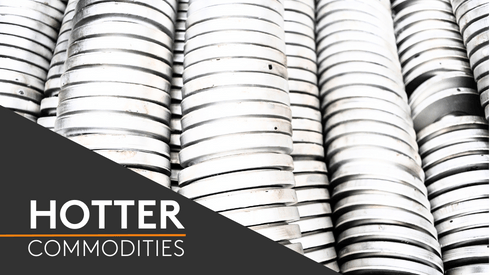The tantalite market is currently dominated by production from artisanal miners in Central Africa, such as the Democratic Republic of the Congo (DRC), and established mining companies in Brazil and elsewhere.
But this situation could be disrupted as new sources of material become developed.
“Lithium could become be a very important source of tantalite – theoretically, it could be the number one source assuming the EV [electric vehicle] market achieves its forecasted potential,” Ian Margerison, executive marketing manager of the Tantalum-Niobium International Study Centre, told Fastmarkets recently.
Global tantalite production was around 2,100 tonnes for 2022 from 15 countries, according to Fastmarkets calculations.
There are more than 800 lithium projects around the world recorded by Fastmarkets, Atanas Atanasov, analyst for Fastmarkets, said.
Of these, around 15 are related to tantalite, and most of these projects are either in an exploration stage, closed mines or without much available information and volumes.
“Without a doubt the emergence of tantalite as a byproduct of lithium is the elephant in the room for the tantalum market in the medium term,” a trader said.
Although the potential is huge it is not clear from available data how large the additional volumes will be.
However, definitive feasibility studies for Liontown Resources’ Kathleen Valley in Australia and Critical Elements Lithium’s Rose Lithium-Tantalum project in Canada DFS indicate a potential additional 200 tonnes per year of tantalite, Atanasov said.
“Lithium-producing regions are expected to be a growing source of tantalite. As a result, tantalite will become a supply-driven product as there will be ample supply unless demand keeps up,” a trader said.
The largest end use of tantalite is in capacitors in the electronics industry.
At present, Pilbara and AMG Brazil appear to be the only lithium producers active on tantalite, with Pilbara producing only 23 tonnes of tantalite in the past year, according to its latest quarterly results, Atanasov said.
It will take time for the arrival of new material to be felt on the spot market but it could be substantial, according to sources.
Australia could ramp up its supply of tantalite as a result of the lithium developments.
“As demand for lithium grows over the coming years, there will be greater Australian production of tantalum and so Australia’s tantalum production is expected to return to historical levels, but with a very different cost structure,” Atanasov said.
Possible two-tier market
Tantalite is currently sold on spot and long-term contracts bases.
Fastmarkets’ spot market price assessment of tantalite, basis 25% min Ta2O5, cif China was $69-72 per lb Ta2O5 on Friday July 28, down $1 from $70-73 per lb Ta2O5 over the previous week.
Lithium miners are likely to prefer the reliable income offered by contract agreements if they are seeking to fund new projects, according to Margerison.
“It can take five years to raise the capital for a mine so miners will prefer long-term contracts to help in secure the necessary financing,” Margerison said. “I expect this material – if sourced from large mining companies – will be preferred by the more stable western markets, if purchased based on long-term contracts.”
As a result, two separate markets could develop with increased volumes of material produced linked to lithium projects.
“Once that happens, there will probably be a two-tier market as the western smelters will look to lock in supply from Australia and elsewhere under long-term contracts,” the trader source said. “African artisanal tonnes will continue to be sold in the spot market, mostly to China, and follow spot market dynamics,” the trader source said.
There will always be a market for material not tied to long-term contractual obligations, according to sources.
“The lithium market will shake up the tantalite supply chain; however, I expect many companies will not want to sign up to long-term contracts,” Margerison said. “Material from Central Africa will always be needed for those who want to use the spot market and thereby avoid the peaks and troughs of the tantalite market.”
Supply potential reliant on lithium demand
Tantalite is already mined in the lithium process but it can lost be to tailings with tin and not recovered.
Increased tantalite supply connected to the lithium market could also see its availability vary according to demand for lithium, which is used in lithium-ion batteries.
“The risk is that when the lithium market is weak, production will fall, and the necessary tantalite production will fall below that contracted,” Margerison said. “The global tantalite supply could be dynamically altered based on the availability of material tied to the world demand for lithium.”
Additionally, there are concerns that most lithium producers are currently limited in their capacity to produce 25% min Ta205 material assessed by Fastmarkets.
“Most lithium producers are not able to upgrade Ta concentrates above 6-10%. Actually, I have not heard of anyone producing Ta concentrate at 25% Ta2O5 or more, except AMG Brazil,” a producer said.
Keep up to date with the latest news and insights on our dedicated battery materials market page.






